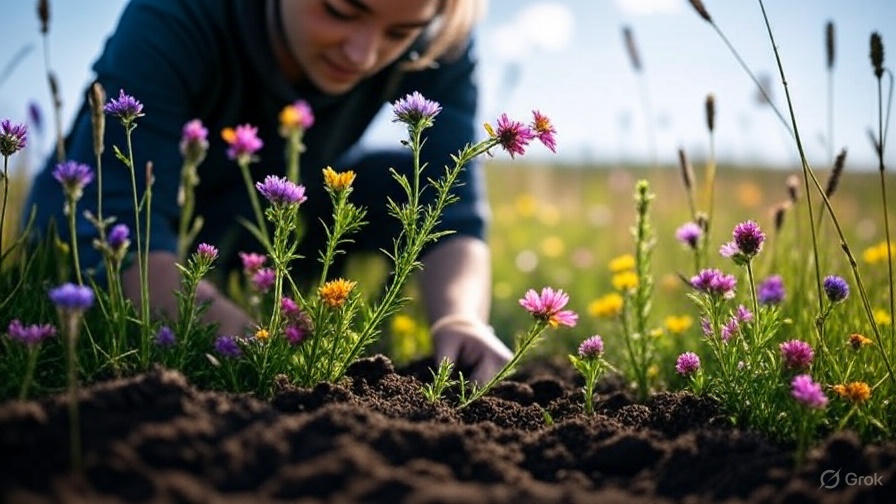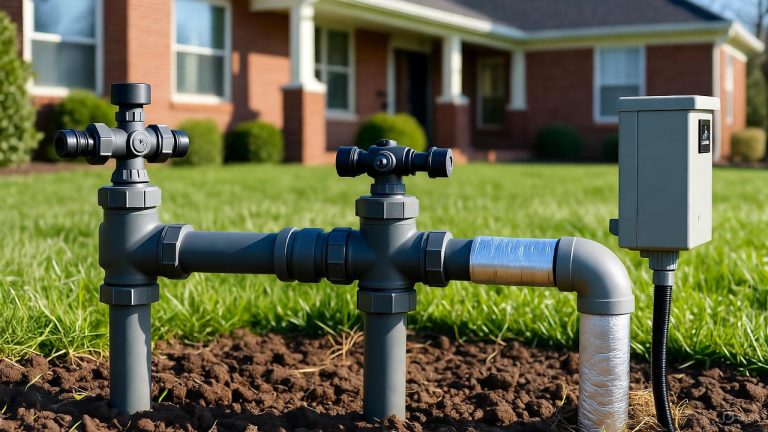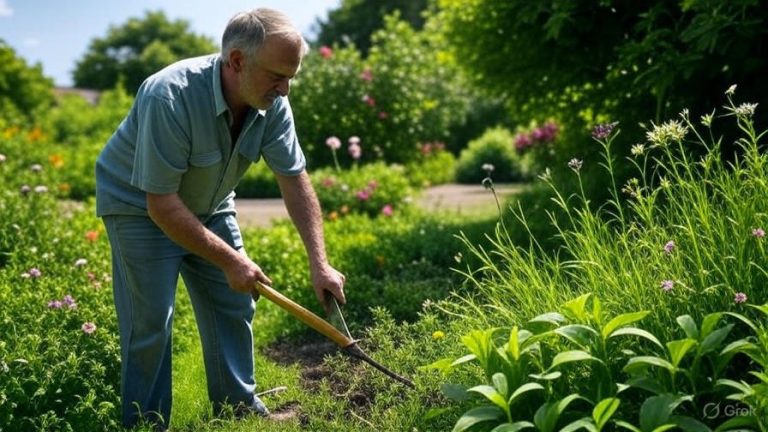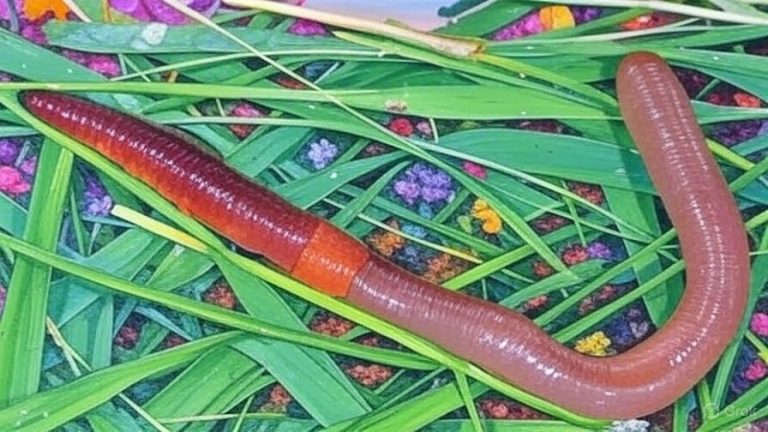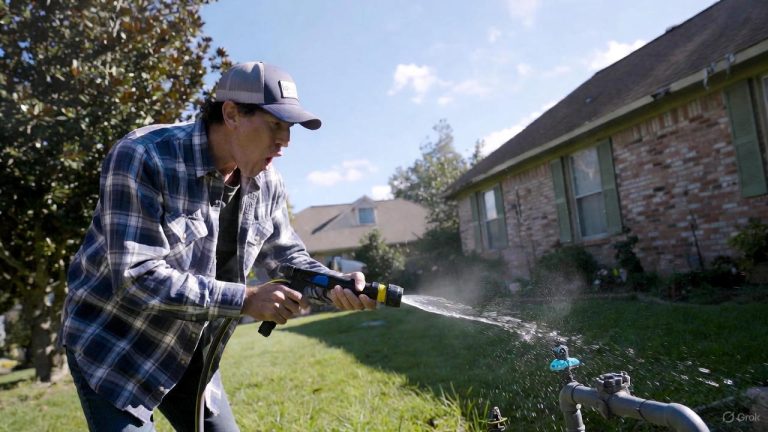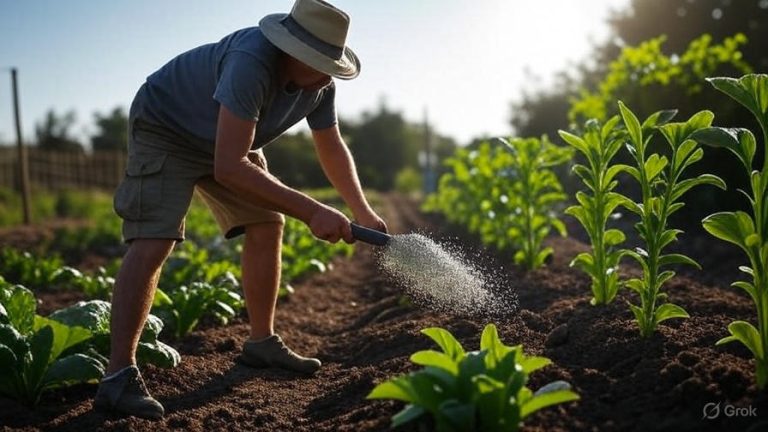How to Plant a Wildflower Meadow?
Wildflower meadows transform ordinary spaces into vibrant ecosystems that support wildlife while creating stunning natural displays. These sustainable landscapes require minimal maintenance once established and provide year-round beauty that changes with the seasons. You can create your own wildflower meadow whether you have a small backyard corner or several acres of land.
Planning Your Wildflower Meadow Project
Success begins with proper planning before you scatter a single seed. Start by evaluating your available space and determining the size of your meadow. Small areas work perfectly for wildflower gardens, while larger spaces allow for diverse plant communities that attract different wildlife species.
Consider your local climate zone and native plant species when planning your meadow. Native wildflowers adapt better to local conditions and support indigenous wildlife populations. Research which flowers grow naturally in your region to create an authentic ecosystem.
Think about the purpose of your meadow during the planning phase. Some people want butterfly gardens filled with nectar-rich flowers, while others prefer bird habitat with seed-producing plants. Your goals influence which wildflower seeds you choose and how you design the space.
Site Selection and Preparation
The location you choose determines the success of your wildflower meadow. Most wildflowers thrive in areas that receive at least six hours of direct sunlight daily. Partial shade works for woodland wildflower species, but sun-loving varieties need full exposure.
Drainage plays a crucial role in site selection. Wildflowers generally prefer well-draining soil that doesn’t stay waterlogged after rain. Avoid low-lying areas where water pools, as this can lead to root rot and seed failure.
Test your soil pH before planting begins. Most wildflowers grow best in slightly acidic to neutral soil with a pH between 6.0 and 7.0. You can adjust pH levels if needed, but many native wildflowers adapt to existing soil conditions.
Remove existing vegetation from your chosen site several weeks before planting. Cut grass and weeds short, then cover the area with cardboard or black plastic to kill remaining plants. This method eliminates competition without using herbicides.
Soil Preparation Techniques
Proper soil preparation creates the foundation for a thriving wildflower meadow. Begin by removing the covering material you used to kill existing vegetation. Pull up any remaining weeds and grass by the roots to prevent regrowth.
Till the soil to a depth of 4-6 inches to break up compacted earth and create a suitable seedbed. Avoid over-tilling, as this can damage soil structure and beneficial microorganisms. A rough, slightly uneven surface actually helps with seed germination.
Add organic matter to improve soil structure and fertility. Compost works well for most wildflower meadows, but avoid using too much fertilizer. Many wildflowers actually prefer lean soils and can become leggy in overly fertile conditions.
Create different microclimates within your meadow by varying soil preparation in different areas. Leave some spots with thinner soil for stress-tolerant species, while building up other areas with more organic matter for plants that prefer richer conditions.
Seed Selection and Native Plant Species
Native wildflower seeds offer the best chance of success and provide maximum benefit to local ecosystems. Research your region’s native flora through local extension offices, native plant societies, or botanical databases. These resources help you identify species that naturally occur in your area.
Mix annual and perennial wildflower species for continuous blooms throughout the growing season. Annual flowers like cosmos and zinnias provide quick color in the first year, while perennial species establish slowly but return year after year.
Create seasonal interest by including early spring bloomers like violets and trout lilies, summer favorites such as black-eyed susans and purple coneflowers, and fall bloomers like asters and goldenrod. This succession ensures your meadow looks attractive from spring through autumn.
Consider adding grass species to your wildflower mix. Native grasses provide structure and support for taller flowers while creating habitat for ground-nesting birds and small mammals. Little bluestem and buffalo grass work well in many regions.
Seed Starting and Germination Requirements
Many wildflower seeds require special treatment to germinate successfully. Cold stratification mimics winter conditions that break seed dormancy in many native species. Place seeds in slightly moist sand or peat moss, seal in plastic bags, and refrigerate for 30-90 days depending on the species.
Some seeds need scarification to break through hard seed coats. Gently sand the seed surface or soak in warm water for 24 hours before planting. Research specific requirements for each species in your seed mix.
Start some wildflowers indoors during late winter if you want earlier blooms or live in an area with a short growing season. Use seed-starting trays filled with sterile potting mix, and provide adequate light with grow lamps or sunny windows.
Direct seeding works well for most wildflower meadows and requires less work than starting transplants. Wait until soil temperatures reach appropriate levels for germination, which varies by species but generally occurs in spring after the last frost date.
Planting Techniques and Timing
Timing your planting correctly ensures the best germination rates and establishment. Fall planting works well for many native wildflower seeds because it allows natural cold stratification over winter. Plant 6-8 weeks before your first hard frost.
Spring planting offers another excellent window for wildflower meadows. Wait until soil temperatures warm to at least 50°F and the danger of hard frost passes. This timing usually occurs 2-4 weeks after your average last frost date.
Broadcast seeding distributes seeds evenly across your prepared meadow site. Mix small seeds with sand or vermiculite to help with even distribution. Use a seed spreader for large areas or scatter by hand for smaller spaces.
Rake lightly after broadcasting to ensure good seed-to-soil contact without burying seeds too deeply. Most wildflower seeds need light to germinate and should be planted at a depth no greater than twice their diameter.
Watering and Early Care
Newly planted wildflower seeds need consistent moisture for successful germination. Water gently with a sprinkler or soaker hose to avoid washing seeds away. Keep the soil surface moist but not soggy for the first 4-6 weeks.
Monitor your seeded area daily during the germination period. Different species germinate at different rates, so don’t worry if some areas appear bare while others show growth. Some wildflowers take several weeks or even months to emerge.
Reduce watering frequency as seedlings establish and develop deeper root systems. Most wildflowers become drought-tolerant once established, but they need regular water during their first growing season.
Protect young seedlings from competition by hand-pulling weeds that emerge near your wildflower plants. This task becomes easier as your meadow fills in and wildflowers begin to crowd out unwanted plants naturally.
Maintenance and Long-term Care
Established wildflower meadows require minimal maintenance compared to traditional lawns and gardens. Annual mowing helps maintain plant diversity and prevents woody plants from taking over. Cut your meadow once per year in late fall or early spring.
Leave standing stems and seed heads through winter to provide food for birds and shelter for beneficial insects. Many wildflower species self-seed when allowed to complete their natural life cycle, ensuring your meadow continues to thrive.
Divide overcrowded perennial clumps every 3-4 years to maintain plant health and prevent any single species from dominating your meadow. This practice also gives you plants to expand your meadow or share with friends.
Remove invasive weeds promptly before they establish large populations. Learn to identify problematic species in your area and pull them when they’re young and easier to remove.
Wildlife Benefits and Ecosystem Support
Wildflower meadows create valuable habitat for numerous wildlife species. Native bees, butterflies, and other pollinators depend on the nectar and pollen that wildflowers provide throughout the growing season. Different flower shapes and bloom times support various pollinator species.
Birds benefit from wildflower meadows in multiple ways. Seeds from flowers like sunflowers and coneflowers provide food, while the insects attracted to flowers offer protein sources. Dense meadow vegetation also provides nesting sites and cover from predators.
Small mammals use wildflower meadows for food and shelter. Field mice harvest seeds, while larger animals like deer browse on leaves and stems. This creates a complete ecosystem that supports biodiversity in both urban and rural settings.
Beneficial insects beyond pollinators also thrive in wildflower meadows. Predatory insects that control garden pests make their homes among the diverse plant communities, reducing the need for pesticides in surrounding areas.
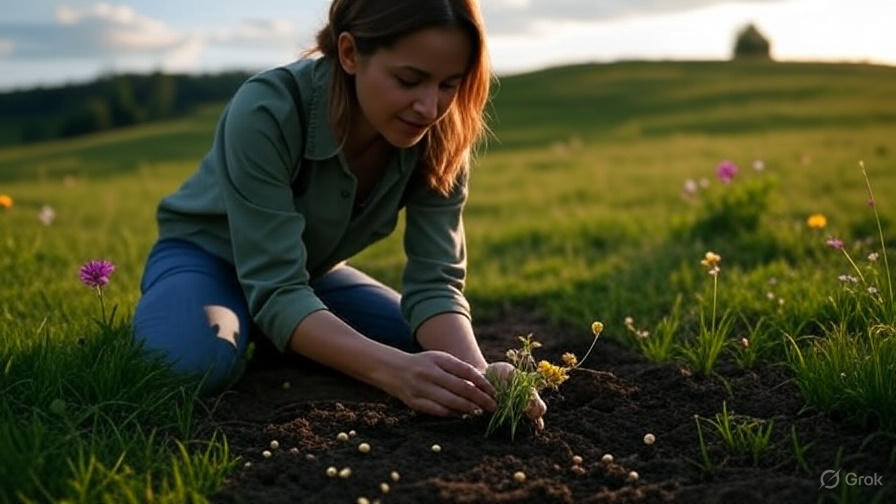
Common Mistakes to Avoid
Many people plant wildflower seeds too deeply, preventing successful germination. Most wildflower seeds are tiny and need light to sprout. Simply press seeds into the soil surface rather than burying them.
Over-fertilizing wildflower meadows leads to excessive leaf growth at the expense of flowers. Wildflowers evolved in natural conditions with limited nutrients and often perform better in lean soils than in heavily fertilized ground.
Expecting instant results causes disappointment for many wildflower gardeners. True meadows take 2-3 years to establish fully, with the best displays often occurring in the third year and beyond.
Mowing too early in the season removes flower buds and prevents seed formation. Wait until plants have finished their growing cycle before cutting, typically in late fall after seeds have matured and dropped.
Seasonal Care Calendar
Spring marks the beginning of active growth in your wildflower meadow. Remove any debris that accumulated over winter and assess which plants survived. This is also the ideal time for spring seeding if you want to add new species.
Summer requires minimal intervention in established meadows. Water only during extended dry periods and enjoy the succession of blooms as different species peak throughout the season. Take notes about which plants perform best for future reference.
Fall brings the most important maintenance task: annual mowing. Cut stems to 6-8 inches above ground level after seeds have dropped but before new growth begins. This timing varies by location but typically occurs in late October or November.
Winter allows your meadow to rest while providing valuable wildlife habitat. Resist the urge to clean up seed heads and dried stems, as these provide food and shelter for overwintering creatures.
Troubleshooting Common Problems
Poor germination often results from planting at the wrong depth or inadequate soil preparation. If few seeds sprout, reassess your planting technique and consider whether the seeds received proper stratification treatment.
Weed competition can overwhelm young wildflower seedlings if not managed properly. Hand-pull weeds regularly during the first two years until your meadow plants establish and begin competing effectively.
Patchy growth patterns may indicate uneven seed distribution or varying soil conditions. Overseed thin areas during the appropriate season and consider whether drainage or soil issues need attention.
Animal damage from deer, rabbits, or birds can reduce establishment success. Use temporary fencing or bird netting if animal pressure is severe, removing protection once plants become established.
Expanding and Enhancing Your Meadow
Add new species gradually to increase diversity without overwhelming existing plants. Introduce 2-3 new species each year rather than making dramatic changes all at once.
Create pathways through larger meadows to improve access and viewing opportunities. Mow narrow trails that wind through the space, allowing you to enjoy your wildflower garden up close.
Incorporate water features like small ponds or rain gardens to attract additional wildlife species. These features expand the habitat value of your meadow and create interesting focal points.
Connect your meadow to other wildlife-friendly areas on your property or in your neighborhood. Wildlife corridors formed by linking habitat patches provide greater benefits than isolated meadows.
Year-Round Beauty and Seasonal Changes
Spring emergence brings excitement as new growth appears and early bloomers like wild lupine and shooting stars provide the first splashes of color. Cool-season grasses begin active growth during this period.
Summer showcases your meadow at its peak with overlapping bloom periods creating constantly changing displays. Document which combinations work well together for future planning and seed collection.
Autumn transforms your meadow into a different kind of beauty with seed heads, changing foliage colors, and late-blooming asters creating warm, golden tones that complement the season.
Winter reveals the structural elements of your meadow as dried grasses and sturdy stems create interesting silhouettes against snow or winter skies. This season proves that wildflower meadows offer year-round interest.
Creating a wildflower meadow rewards you with years of low-maintenance beauty while supporting local ecosystems and wildlife populations. The initial investment of time and effort pays dividends as your meadow matures and becomes a self-sustaining natural community. Start small if you’re uncertain, and expand your wildflower paradise as you gain experience and confidence in this rewarding gardening adventure.

